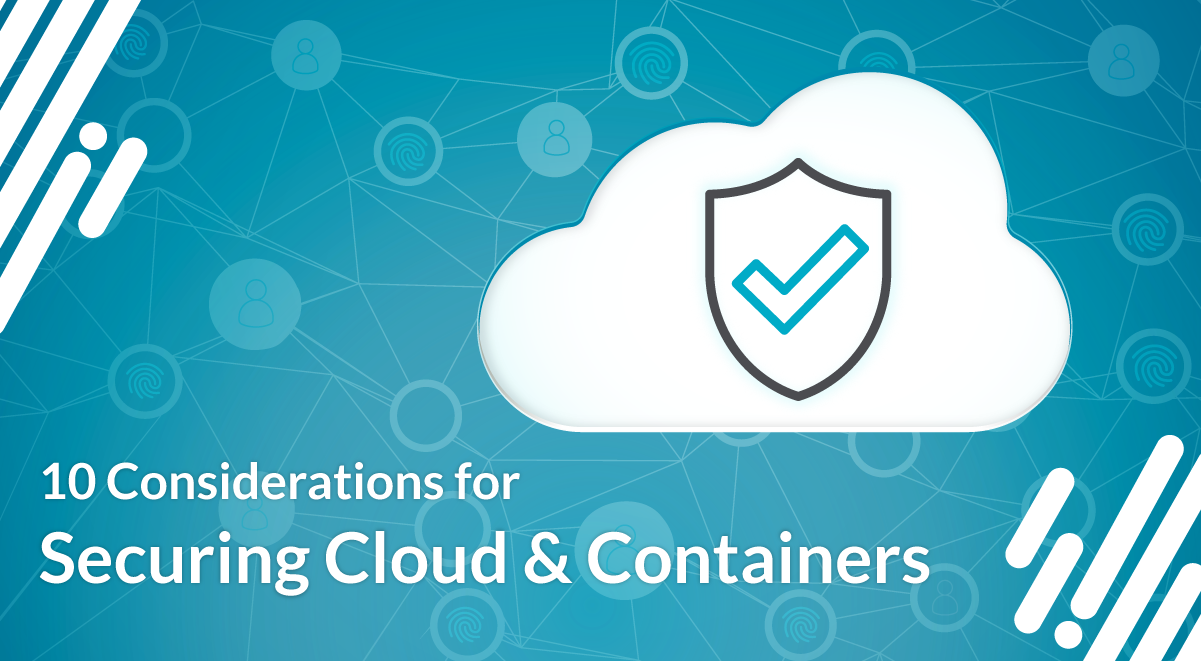Most organizations adopt cloud and containers to accelerate application development, but by adopting a secure DevOps approach and embedding security into the DevOps workflow, you can ensure security controls don’t slow down developers.
Check out these key considerations to keep in mind as you put together your plan for securing clouds and containers.
1. Secure the CI/CD build
Shift-left security integrates image scanning into the continuous integration and continuous delivery (CI/CD) pipeline. Make sure to scan both operating system (OS) and non-OS packages for vulnerabilities in every stage of the CI/CD pipeline to avoid costly fixes at deployment. Security best practices and compliance should also be checked by scanners, and it’s a best practice to adopt inline scanning to avoid sending images outside of your environment.
2. Take advantage of Kubernetes native controls
Prevent containers with vulnerabilities and risky configurations from being deployed into production clusters by using Kubernetes admission controller. Kubernetes admission controller offers flexible policy setting, and, as a native construct in Kubernetes framework, it offers a powerful mechanism to control what gets deployed in Kubernetes clusters.
3. Secure IaC templates
You can shift security further left by implementing Infrastructure as Code (IaC) security. Enforce security policies in IaC by scanning cloud and Kubernetes templates for misconfigurations and violations of security best practices. Make sure to implement a pull request (PR) approach for drifts detected at runtime to automate remediation at the source.
4. Manage excessive cloud permissions
Ensure you have full visibility into cloud assets, identifying misconfigurations and drift across multi-cloud environments. Implement the least-privilege principle by detecting and removing excessive permissions on user roles (human and non-human). Look for tools that can not only automatically discover all identity and access management (IAM) roles and their permission configurations but also can detect roles with over permissions and recommend the right permission settings.
5. Implement cloud security monitoring
Keep track of cloud assets and their configurations. Cloud misconfigurations can easily happen and are a leading cause of security incidents. Make sure that cloud log auditing is enabled for all services and monitored for threat detection. Cloud logs are important forensics as well. Every cloud provider offers activity audit logs that show who did what and when.
6. Implement runtime security
Act fast on early indicators of compromise. Runtime threats are real and growing in sophistication. Adversaries are launching complex attacks to evade detection while infecting systems for maximum gain. Don’t miss weak signals. Get real-time, deep visibility into events to detect suspicious behavior and malicious activity in the cloud, container, and Kubernetes.
7. Enforce zero-trust network segmentation
Adhere to Zero-Trust principles by applying network segmentation and allowing only required communication between container services. Make sure that all network communications between pods, services, and applications inside Kubernetes follow network policies. Defining network segmentation manually is time consuming and error prone. Look for ways to automate.
8. Monitor container and Kubernetes performance and availability
Monitor resource consumption and application golden signals to stay ahead of performance, availability, and capacity issues in your Kubernetes clusters. Cloud-native environments are complex, so make sure that the monitoring is simplified with scoping capabilities to focus on a particular region, deployment, namespace, or workload. Also, look for out-of-the-box dashboards and alerts, as well as easy integration with other data sources.
9. Have an incident response framework for containers
Implement incident response and effective forensic investigation processes to understand security breaches, meet compliance requirements, and recover quickly in cloud-native environments. Make sure that a source of truth is available for providing deep visibility into system calls, as well as all activity in the container, and orchestration layers. Incidents don’t happen in a vacuum; granular data must be available to reconstruct the attack before and after the incident.
10. Use open-source tools to avoid vendor lock-In
Embrace solutions based on open-source to avoid vendor lock-in and take advantage of ecosystem integrations contributed by the community. Products based on open-source standards provide transparency and flexibility, so you can understand how detection rules are defined and customized to meet your needs.
By adhering to standards set by the community, you can protect your investment in technology and more easily find team members with the skills you need.
Want to learn more about cloud security?
Check out our “Securing Containers & Cloud” ebook, and discover topics like Infrastructure as Code (IaC), responding to threats, keeping your containers and cloud compliant, and more!



